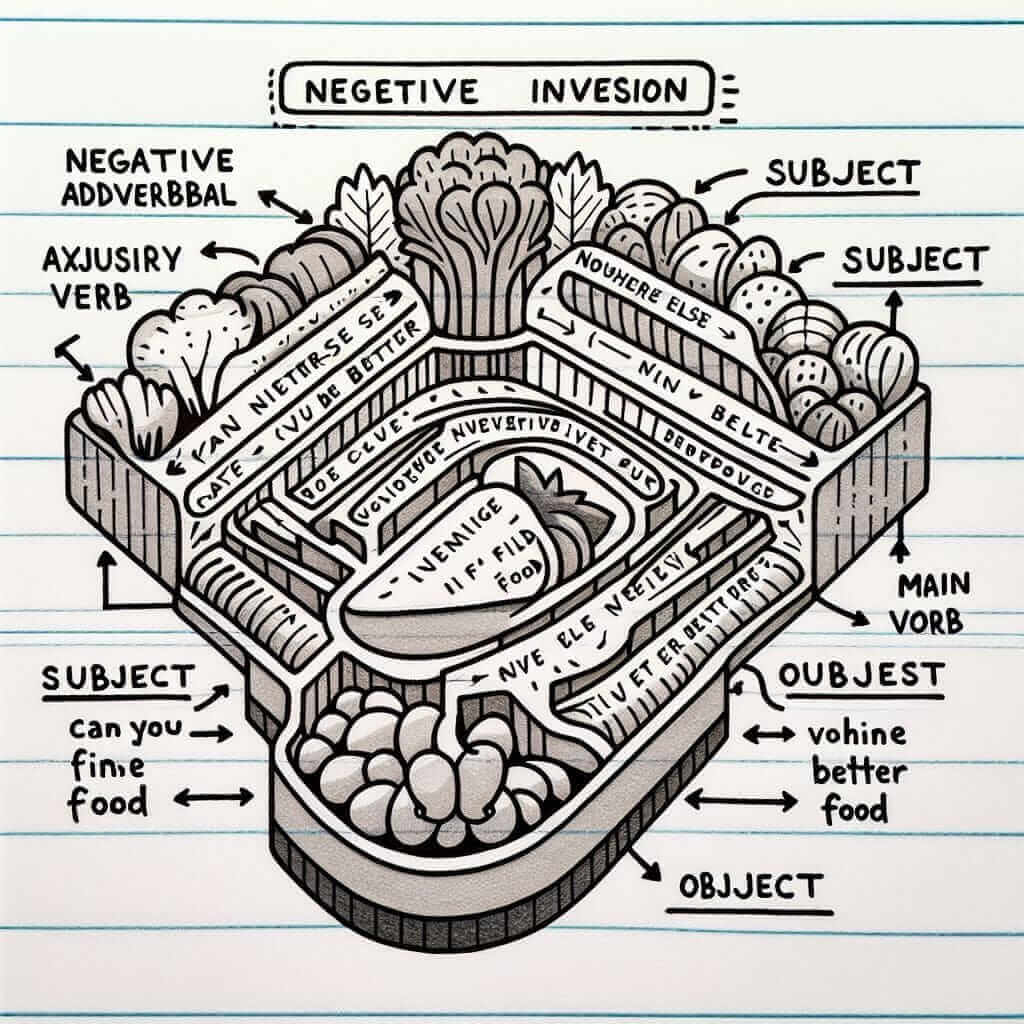Have you ever encountered sentences beginning with “Nowhere,” “Never before,” or “Under no circumstances”? These intriguing constructions are examples of negative inversion, a grammatical structure that can significantly enhance your IELTS writing and speaking, especially when aiming for a band 7 or higher.
Nội dung bài viết
Let’s explore some examples of how negative inversion might be used in different sections of the IELTS exam:
Speaking Part 2:
Describe a time you ate a delicious meal.
“It was during a trip to Italy. Nowhere else have I tasted such flavorful pasta and pizza. The ingredients were fresh, and the chefs clearly put their heart and soul into every dish.”
Writing Task 2:
Some people believe that technology has made our lives easier. Others disagree and think it has made our lives more stressful. Discuss both views and give your opinion.
“While technology has undeniably brought about conveniences, its impact on stress levels is debatable. Under no circumstances should we disregard the potential for technology to exacerbate stress through constant connectivity and information overload.”
Listening Section 3:
Narrator: The professor emphasizes the importance of original research.
Student 1: Right, she said at no point should we plagiarize or simply rehash existing ideas.
These examples highlight how negative inversion adds a touch of sophistication and emphasis to your language. Let’s delve deeper into its mechanics.
Deconstructing Negative Inversion
Negative inversion is a form of inversion that occurs when we begin a sentence with a negative adverbial phrase or adverb, followed by an auxiliary verb and then the subject. It is used for emphasis and to create a more dramatic or formal tone.
Understanding the Structure
Formula:
Negative Adverbial + Auxiliary Verb + Subject + Main Verb + …
Example:
- Nowhere else can you find better food.
Analysis:
- Negative Adverbial: Nowhere else
- Auxiliary Verb: can
- Subject: you
- Main Verb: find
- Object: better food

Applying Negative Inversion in IELTS
1. Emphasizing a Point
In Writing Task 2, negative inversion effectively emphasizes your stance:
- Never before has it been so crucial to address climate change.
- Not only does pollution harm the environment, but it also poses serious health risks.
2. Adding Variety and Sophistication
Instead of: “You can’t find better food anywhere else,” use:
- Nowhere else can you find better food.
This subtle change elevates your language and demonstrates a wider range of grammatical structures.
3. Formal Writing and Speaking
Negative inversion is particularly useful in formal writing, such as Writing Task 1 (describing trends) or Writing Task 2 (presenting an argument):
- Rarely do we see such a dramatic increase in global temperatures.
- In no way does this study support the claims made by the opposition.
Common Pitfalls and How to Avoid Them
-
Incorrect Verb Form: Using the base form of the verb instead of the auxiliary verb.
- Incorrect: Nowhere find you better food.
- Correct: Nowhere can you find better food.
-
Overuse: Using negative inversion too frequently can make your writing sound unnatural and repetitive. Use it sparingly for emphasis.
-
Informal Contexts: While useful in formal writing, avoid using negative inversion extensively in the Speaking test, especially in Parts 1 and 3, where a more conversational tone is appropriate.
Conclusion
Mastering negative inversion adds a valuable tool to your IELTS grammar toolkit. By understanding its structure, application, and potential pitfalls, you can confidently incorporate this advanced grammatical structure into your writing and speaking, impressing the examiner and boosting your band score. Keep practicing, and soon you’ll be constructing sentences like “Nowhere will you find a more comprehensive guide to negative inversion!”